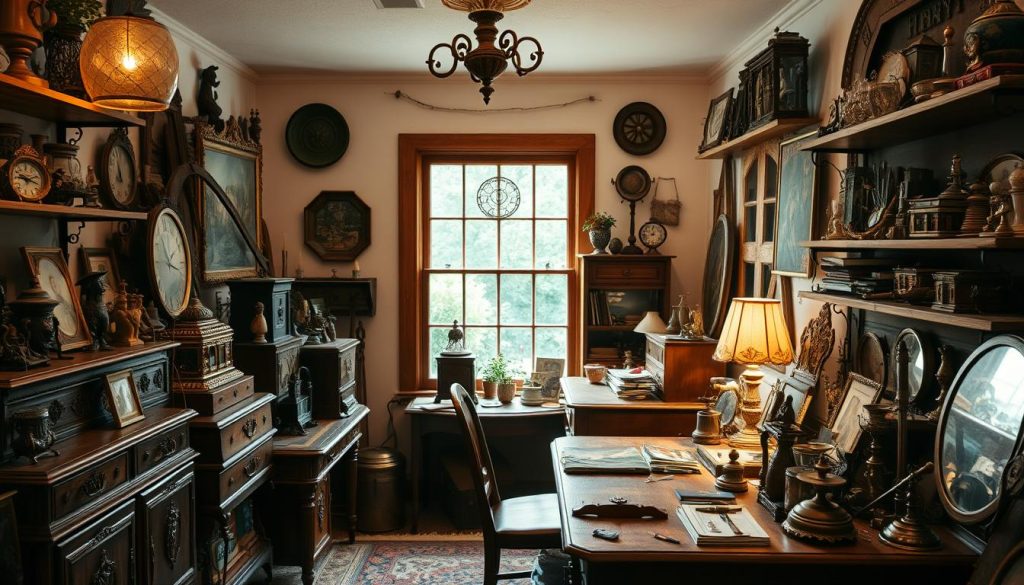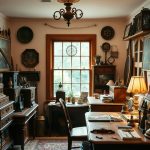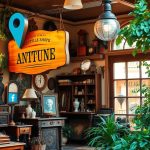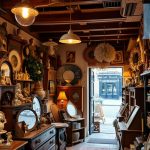Starting an antique business from home is exciting and rewarding for those who love antiques. The UK’s antiques market is booming, full of chances for new entrepreneurs. This guide will give you the key information and steps to get into the antique trade. It’s perfect for anyone who loves collecting or selling antiques, aiming to make a business from their home.
Understanding the Antique Market
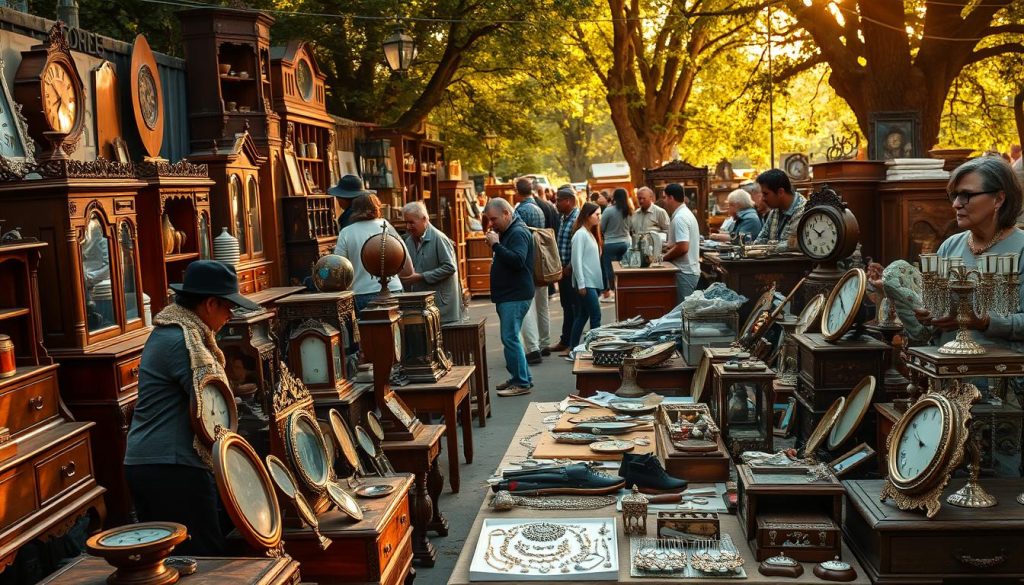
Learning about the antique market is key for starting an antique business. It’s all about items with a history, which makes them valuable. Knowing what makes an item an antique is crucial for success.
Defining Antiques: What Qualifies?
Antiques are usually over 100 years old. Their value depends on several things:
- Condition: The item’s condition greatly affects its price.
- Rarity: Rare items are more valuable.
- Provenance: Knowing who owned it before can make it more desirable.
Knowing these factors is vital for new antique business owners.
Current Trends in the Antique Market
Antique trends change as what people like changes. Now, there’s a big interest in sustainable and vintage items. People see antiques as a green choice.
There’s also a trend towards unique home decor. Consumers love the unique look and feel of antiques. Knowing these trends helps in making smart choices in buying and selling antiques.
Researching Your Niche
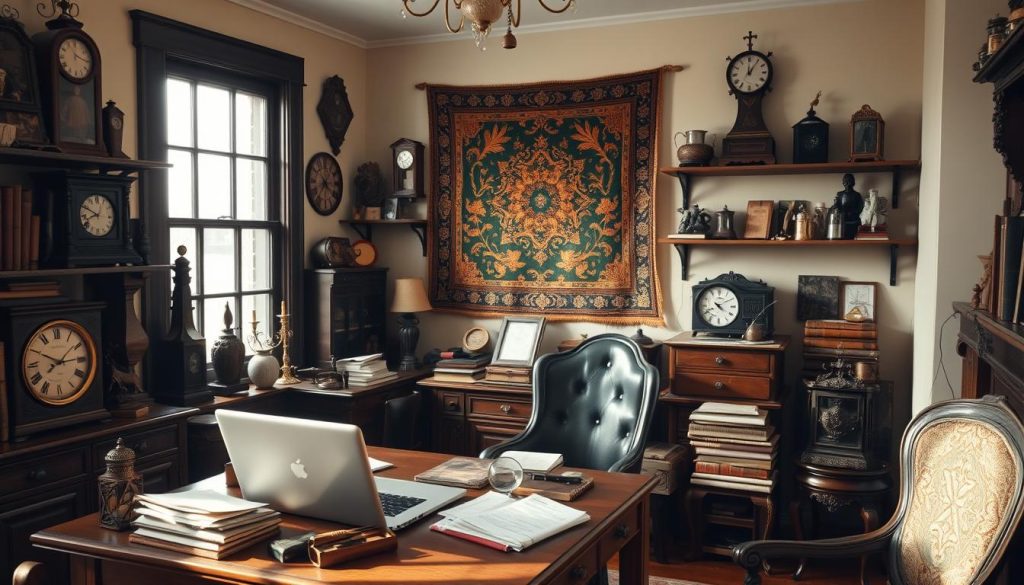
Starting an antique business means knowing what antiques are popular. It’s key to pick areas that interest you and have growth potential. The antiques market has many segments, catering to different tastes. This knowledge helps focus your efforts and what to stock.
Popular Antique Categories
Many categories lead the antique market, offering chances for new entrepreneurs. These include:
- Furniture: Vintage furniture, especially from Victorian or mid-century modern times, is highly sought after.
- Ceramics: Antique pottery and porcelain are always in demand, especially from well-known brands.
- Jewellery: Vintage and antique jewellery draws a broad audience, from fashion lovers to serious collectors.
- Art: Original works by famous artists usually fetch high prices.
- Home Décor: Items like clocks, mirrors, and decorative pieces are popular for those seeking unique items.
Identifying a Target Audience
Knowing who your customers are is vital in the antiques market. Factors that help identify your audience include:
- Age: Different ages prefer different antiques, with millennials often choosing mid-century items and older people opting for traditional styles.
- Buying Behaviour: Market trends show what buyers want and how much they can spend.
- Interests: Understanding your audience’s hobbies and interests helps in creating an attractive inventory.
How to Start an Antique Business from Home
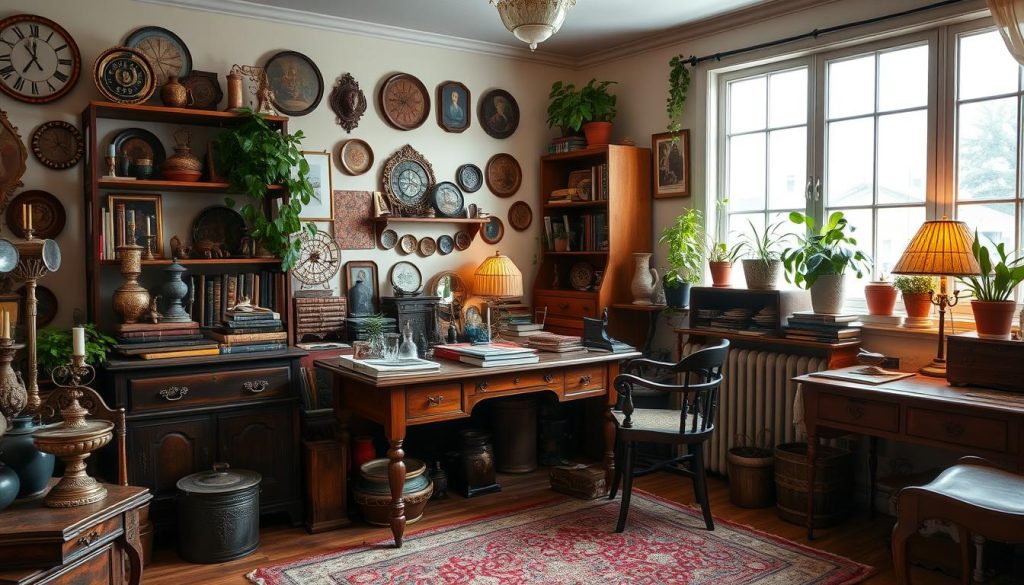
Starting an antique business from home is both rewarding and challenging. A solid business plan is key to success. It helps you stay on track. Also, having a tidy home workspace is vital for keeping track of stock and running your business smoothly.
Creating a Business Plan
Your business plan is the foundation of your venture. It should cover several important points:
- Defining your business goals
- Identifying the types of antiques you will offer
- Establishing a marketing strategy
- Outlining financial projections and budgeting
- Setting timelines for achieving milestones
A detailed business plan helps you make informed choices. It also shows the way to grow your antique business.
Setting Up Your Home Workspace
Having a specific area for your business is crucial. Your workspace should be functional and efficient. Focus on:
- Organising your inventory with easy access
- Designating space for cleaning and refurbishing antiques
- Creating a comfortable environment for communications with customers
- Implementing storage solutions that protect your items
By arranging your workspace thoughtfully, you boost productivity. This makes starting your antique business journey smoother.
Legal Considerations for Starting Your Business
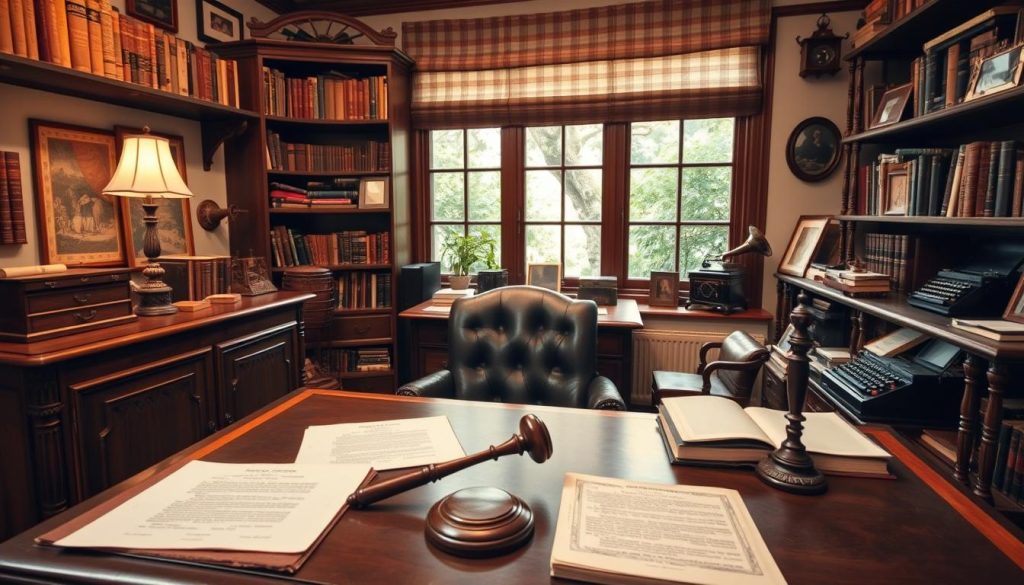
Starting an antique business in the UK means you need to pay attention to legal stuff. You must know about the business licences UK and tax rules. This part will cover the key licences and taxes you might need for your antique business.
Required Licences and Permits
You might need certain licences and permits for your antiques business. These depend on where you are and what you do. Here are some possible ones:
- Business Registration: You can register your business as a sole trader, partnership, or limited company.
- Local Authority Licensing: You might need to get local business licences.
- VAT Registration: You must register for VAT if your business makes more than the VAT limit.
Understanding Tax Obligations
Following tax rules is key for any business. For an antique business, keep good records of sales, costs, and profits. This means:
- Income Tax: You’ll have to pay income tax on your profits.
- National Insurance Contributions: You might need to pay these based on your business type.
- VAT: If you’re VAT registered, you must charge VAT on sales and file returns.
Sourcing Antiques for Your Business
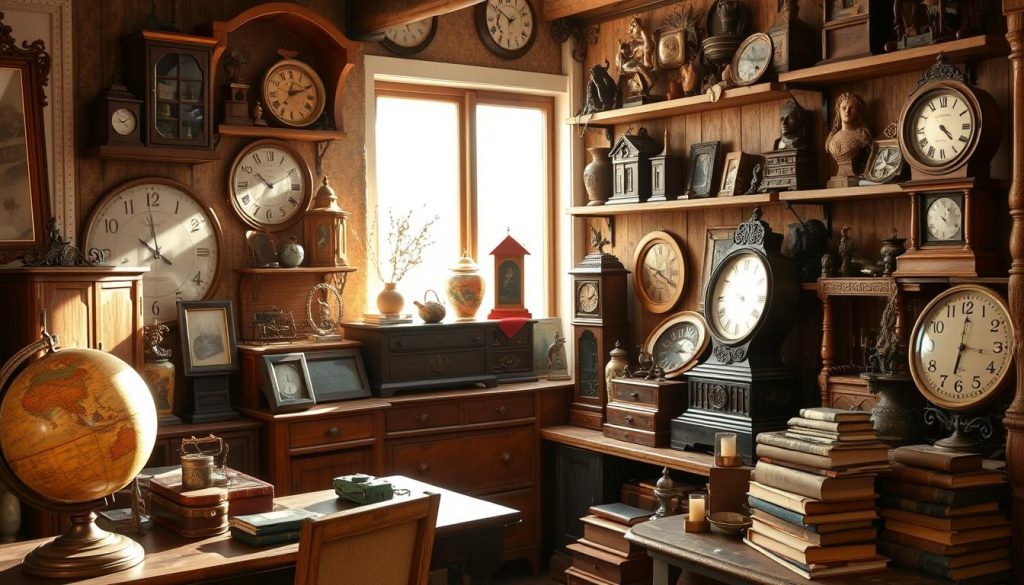
Finding antiques is key to a successful antique business. You can look for them in local shops or big auction houses in the UK. These places help you grow your collection and learn more about antiques.
Where to Find Quality Antiques
Here are some top spots for finding antiques:
- Thrift shops and flea markets often have hidden treasures at good prices.
- Estate sales let you buy items directly from people selling their stuff.
- Specialised antique fairs bring together vendors and collectors in one place.
- Online marketplaces like eBay or auction sites offer a huge range of antiques from home.
Understanding Auction Houses and Estate Sales
It’s important to connect with reputable auction houses to know about sales. Learning how to bid can really help you find antiques. At estate sales, check the quality and realness of items carefully. This way, you can offer a beautiful collection to your customers.
Establishing Your Brand
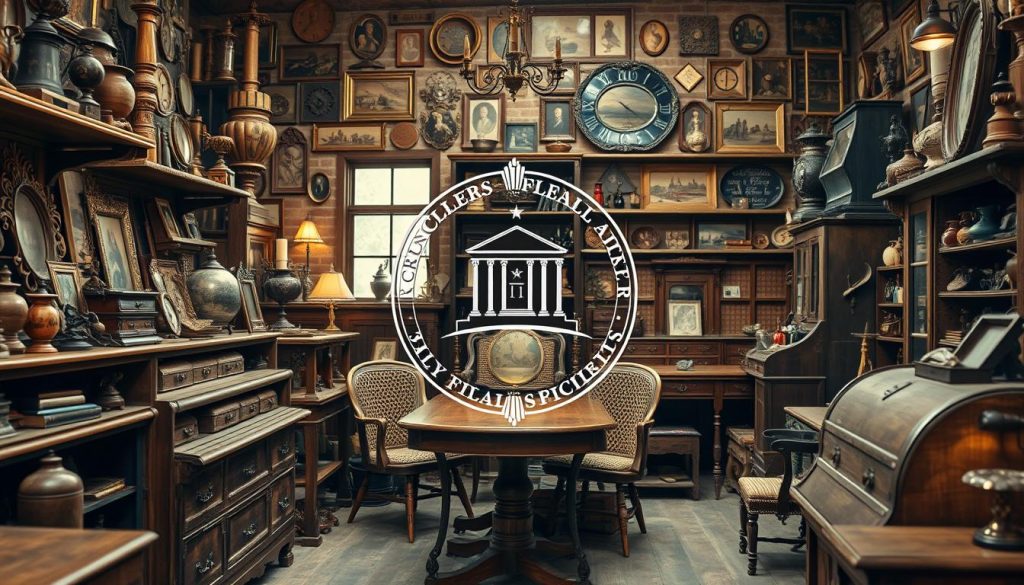
In the world of antiques, having a strong brand is key. A well-planned branding strategy can make you stand out. This means your products will attract more customers. Key parts of building your brand include choosing a business name and logo, and having a clear unique selling proposition.
Choosing a Business Name and Logo
Your business name and logo are what first catch your customers’ eyes. A catchy name should reflect what you sell and appeal to your audience. Think about these points when picking a name:
- Choose a name that shows what you’re all about.
- Avoid names that are too hard or long.
- Make sure the name isn’t taken by someone else.
Once you’ve picked a name, work on your logo. A good logo is simple but stands out. Use colours and fonts that show off your brand’s personality and values. This should match your overall branding plan.
Creating a Unique Selling Proposition (USP)
Having a unique selling proposition is crucial in a busy market. It tells customers what makes you different from others. To make a strong USP, follow these steps:
- Find what makes you special—what do you offer that others don’t?
- Know who you’re selling to—what do they need and like?
- Make a clear message that sums up your business.
By building a strong brand with a great business name, logo, and USP, you set your antique business up for success.
Marketing Your Antique Business
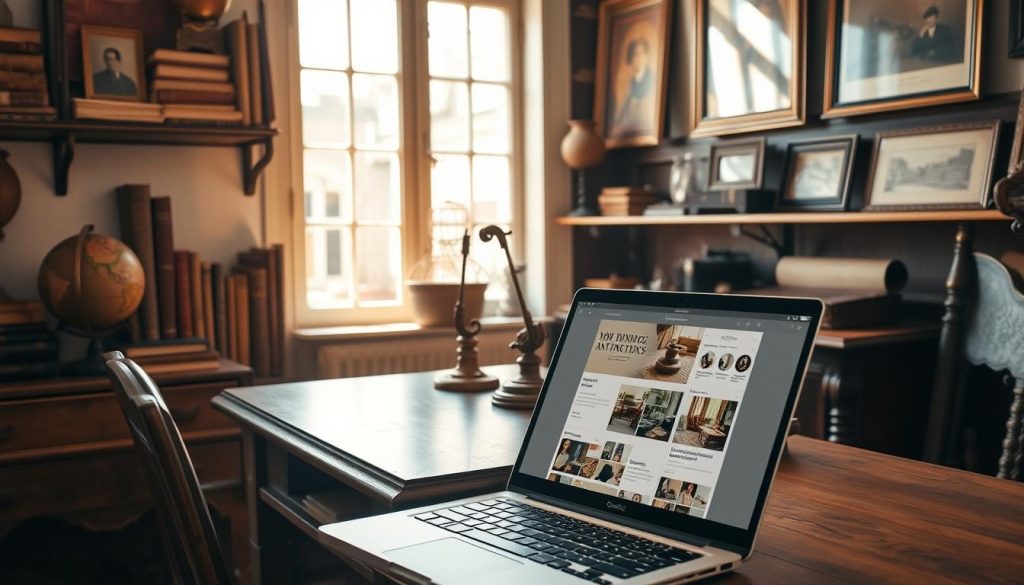
Marketing is key for your antique business to grow. Using the right channels can make your business more visible and increase sales. Social media is a big part of this, letting you show off unique items and connect with fans. It helps spread the word about your brand and lets you build personal connections with buyers.
Utilising Social Media for Brand Awareness
Social media is a great way to promote your antique business. Sites like Instagram and Facebook let you post beautiful photos of your antiques. You can tell stories about their history and why they’re special. Here are some tips to get more people interested:
- Use eye-catching photos to grab attention.
- Talk to your followers by commenting and messaging them.
- Work with influencers who love antiques.
- Give special deals to your followers.
By focusing on social media, you can target your marketing better. This means sending your content to people who really like antiques.
Building an Online Store: Platforms to Consider
Having an online store for antiques is crucial to reach more customers. There are many platforms that can help you do this. Here are some top choices:
- Shopify: Easy to use and has strong e-commerce tools.
- Etsy: Great for unique, vintage, and handmade items.
- eBay: A top site for auctioning antiques and collectibles.
- Big Cartel: Perfect for independent sellers who want a simple setup.
Picking the right platform is important for your marketing strategy. Look at each one’s features, like customer base, fees, and ease of use. This will help you make a choice that fits your needs.
Pricing Your Antiques Effectively
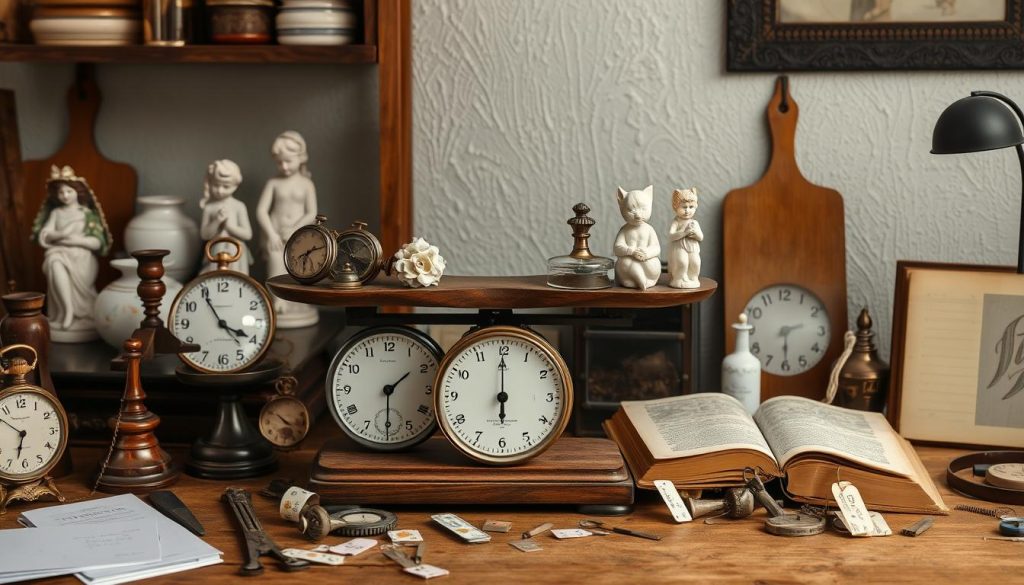
Setting the right price for your antiques is key to your business’s success. It’s all about knowing the market and understanding what affects prices. By doing thorough market research, you can spot trends and set prices that draw in customers.
Conducting Market Research for Pricing
Start by looking at similar items out there. Websites like eBay, Etsy, and antique-focused sites offer great insights into what people are paying. Keep an eye on these points:
- Price ranges for similar antiques
- How quickly items sell at different price points
- Customer feedback and preferences
This info helps you set prices that match what buyers expect.
Factors Influencing Antique Prices
Many things affect how much antiques cost. Knowing these can help you price your items right:
- Condition: An antique’s condition greatly impacts its value. Items in good shape usually go for more money.
- Rarity: Rare or limited items often get more attention and higher prices because they’re hard to find.
- Demand: Trends can change prices. Items that are currently popular might cost more.
- Historical Significance: The history and story behind an antique can really boost its value.
Considering these factors will help you price your antiques well. This way, you can make good profits and keep customers interested.
Building an Online Presence
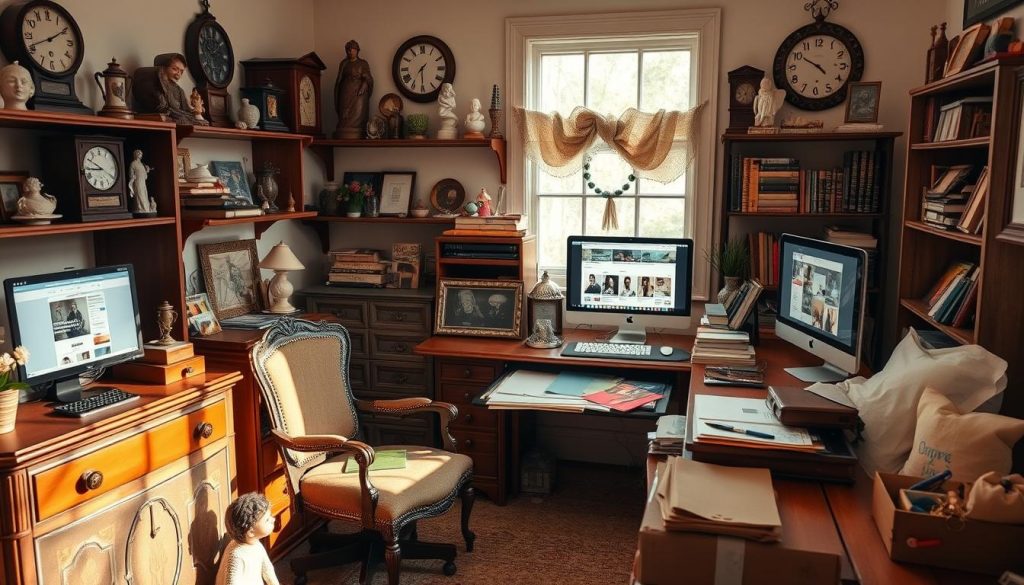
Having a strong online presence is key for antiques businesses. A good website acts as a digital shop window, showing off your collection to potential buyers. It’s important to know what makes a website great for users. This can lead to more sales. Also, using SEO for antiques helps you show up in search results, bringing in more visitors.
Creating a Website: Essential Features
When making a website for your antiques business, think about these must-have features:
- User-friendly navigation that makes it easy for visitors to find what they’re looking for.
- High-quality images of your antiques, showing off details and condition.
- A strong search function to help customers find specific items fast.
- Clear and easy-to-find contact info to encourage people to get in touch.
- Secure payment options to make customers feel safe.
Implementing SEO Strategies
To improve your online visibility, basic SEO strategies are crucial. Here’s what to focus on:
- Keyword optimisation by using terms like ‘antiques’ and specific categories in your content.
- Creating valuable content, like blog posts about antique care, history, or trends, to draw in potential customers.
- Building quality backlinks by working with other antique-related websites or blogs.
- Using social media to promote your antiques and drive traffic to your site.
Networking with Other Antique Dealers
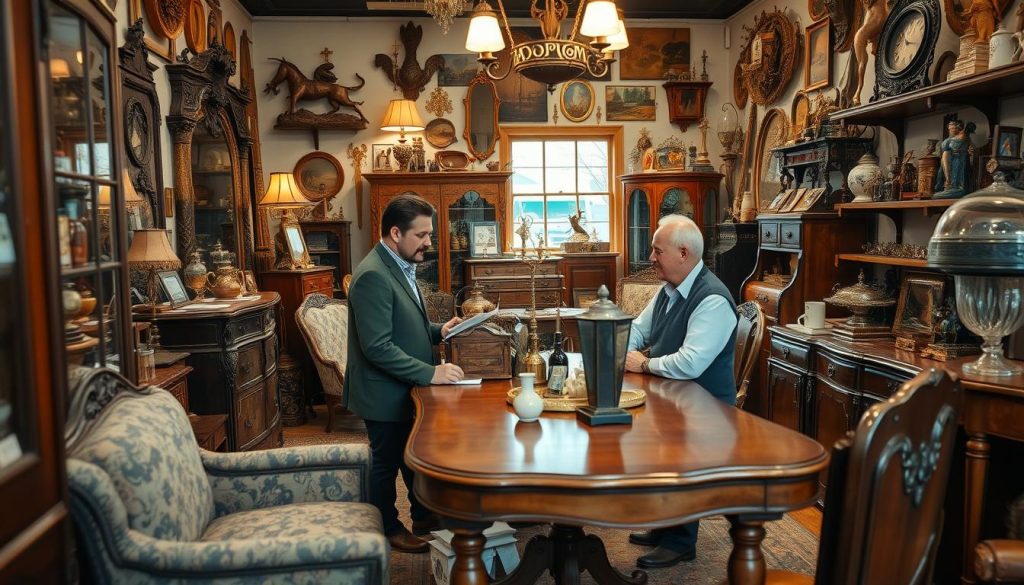
For anyone wanting to become an antique dealer, networking is key. It opens doors to learning and working together. By connecting with others, you can learn about market trends, how to value items, and where to find them.
Joining Antique Collectors’ Groups
Joining groups for antique collectors is a smart move for both new and seasoned dealers. These groups have meetups, discussions, and workshops. They’re perfect for sharing knowledge and getting tips on finding rare items.
- Access to exclusive information and resources
- Opportunities to collaborate on projects or events
- Building friendships and mentorships
Participating in Antique Shows and Fairs
Antique shows in the UK are a great way to show off your collection. They let dealers meet potential buyers, appraisers, and other pros. These events create a community and help increase your visibility.
Being part of these events can lead to important partnerships. Learning from experienced dealers is very useful. So are the relationships you make at these events.
Shipping and Handling Antiques

When you’re shipping antiques, making sure they arrive safely is key. Packing them well is crucial to avoid damage. This guide will show you how to pack antiques safely and find reliable shipping services.
Best Practices for Safely Packing Antiques
Proper packing protects your antiques from damage. Here are some tips:
- Use high-quality packing materials, such as bubble wrap and foam peanuts, to cushion fragile items.
- Choose sturdy boxes that can withstand weight and pressure, avoiding flimsy materials.
- Wrap each antique individually to prevent contact between pieces during movement.
- Fill any empty space in boxes with packing materials to avoid shifting during transport.
- Clearly label boxes with “Fragile” to ensure careful handling.
Choosing Reliable Shipping Services
Finding the right shipping service is key for safe delivery. Look at these factors:
- Research companies that specialise in shipping antiques, as they tend to have the necessary expertise.
- Compare rates and services to find a cost-effective solution without sacrificing quality.
- Examine reviews and testimonials to gauge previous customer experiences regarding reliability.
- Verify whether the service offers insurance options for valuable items during transit.
- Ensure that tracking services are included to monitor the shipment’s progress.
Customer Service and Engagement
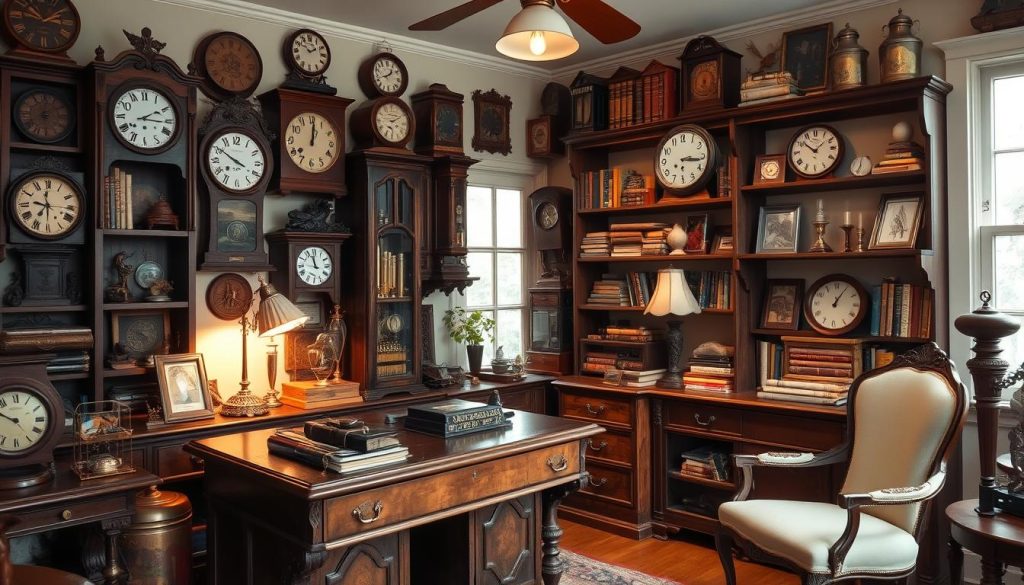
In the world of antiques, talking to customers well is key. It’s not just about selling things. It’s about making sure customers have a good time. Good communication helps keep customers coming back.
Communicating with Your Customers
Here are some ways to talk to your customers well:
- Answer their questions quickly to make them feel important.
- Handle complaints with care, offering solutions that show you care.
- Check in after they buy to make sure they’re happy with their purchase.
Building Loyalty Through Customer Support
Great customer support builds strong relationships. Here’s how to keep customers coming back:
- Keep in touch with newsletters about new antiques and special deals.
- Have a loyalty programme with rewards for regular customers.
- Ask for their thoughts to show you value their opinions.
Financial Management for Your Business
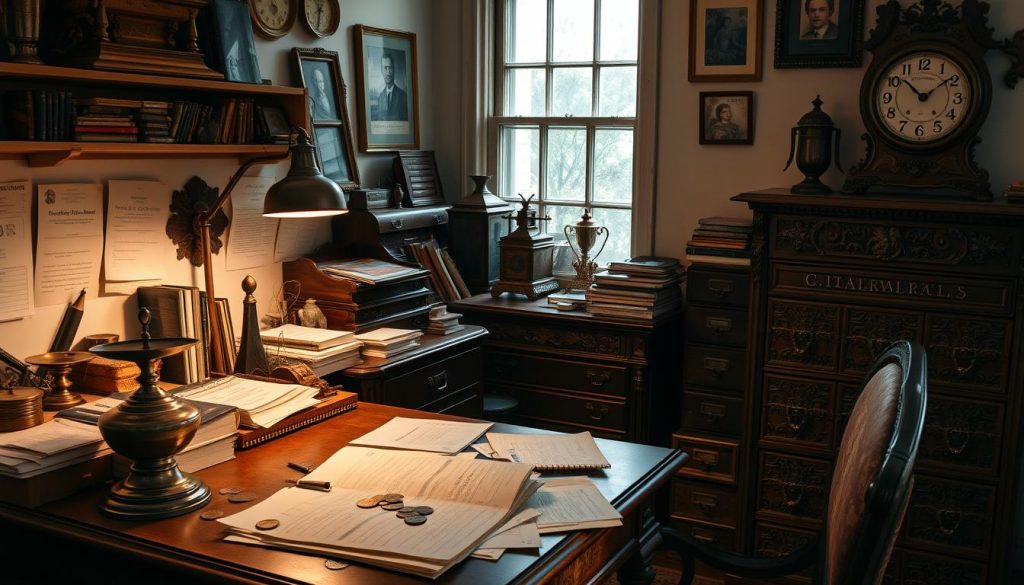
Starting a successful antiques business needs more than just a love for collecting. You must also understand financial management well. Knowing basic accounting is key to keeping your finances healthy. This knowledge helps you track your spending and earnings, keeping your business profitable.
Basic Accounting Principles for Beginners
Every antiques business owner should learn the basics of accounting. Important ideas to grasp include:
- Double-entry bookkeeping: Every deal should affect at least two accounts for balance.
- Revenue recognition: Record income when it’s earned, not just when paid.
- Matching principle: Match expenses with the revenue they support in the same period.
These principles are crucial for managing your finances. They help you accurately record and review your financial data.
Tracking Expenses and Revenues
Keeping an eye on your spending is crucial for any antiques business. It helps you see your profit margins and guides your future choices. Here are some tips:
- Keep a detailed ledger: Record all transactions carefully.
- Use accounting software: Tools like QuickBooks or Xero make tracking easier.
- Check financial statements often: This keeps you aware of your financial health.
By focusing on these areas, you can make better financial decisions. This helps keep your antiques business profitable.
Continuing Education in Antiques
To stay ahead in the antique business, it’s key to keep learning. Expanding your knowledge keeps you up-to-date with market changes and trends. Workshops and online courses are great for learning about valuations, restoration, and the history of antiques.
Reading industry publications, newsletters, and blogs also boosts your knowledge. These sources offer insights into best practices and new trends. They’re vital for anyone looking to improve their skills in antiques. Staying informed not only deepens your expertise but also makes you a trusted seller.
Networking at antique fairs and exhibitions is another way to learn. You can hear from experienced dealers and experts. This approach ensures your business stays relevant and successful over time.

